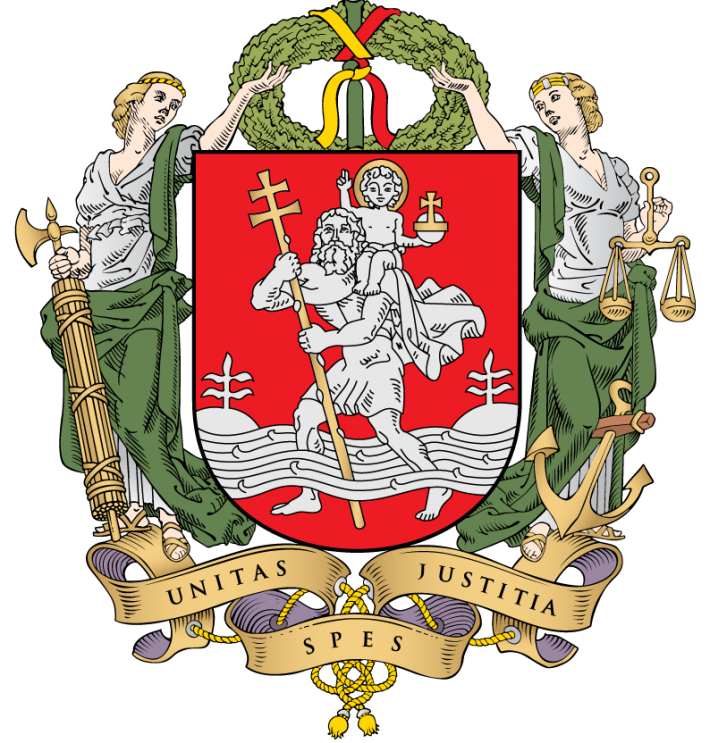Views: 214
 The church and Vilnius Calvary are an expression of gratitude to God for the liberation in 1661 of Lithuania from the Russian Empire
The church and Vilnius Calvary are an expression of gratitude to God for the liberation in 1661 of Lithuania from the Russian Empire
 It is the second oldest and once the most famous Calvary in Lithuania, revered by pilgrims and processions of believers
It is the second oldest and once the most famous Calvary in Lithuania, revered by pilgrims and processions of believers
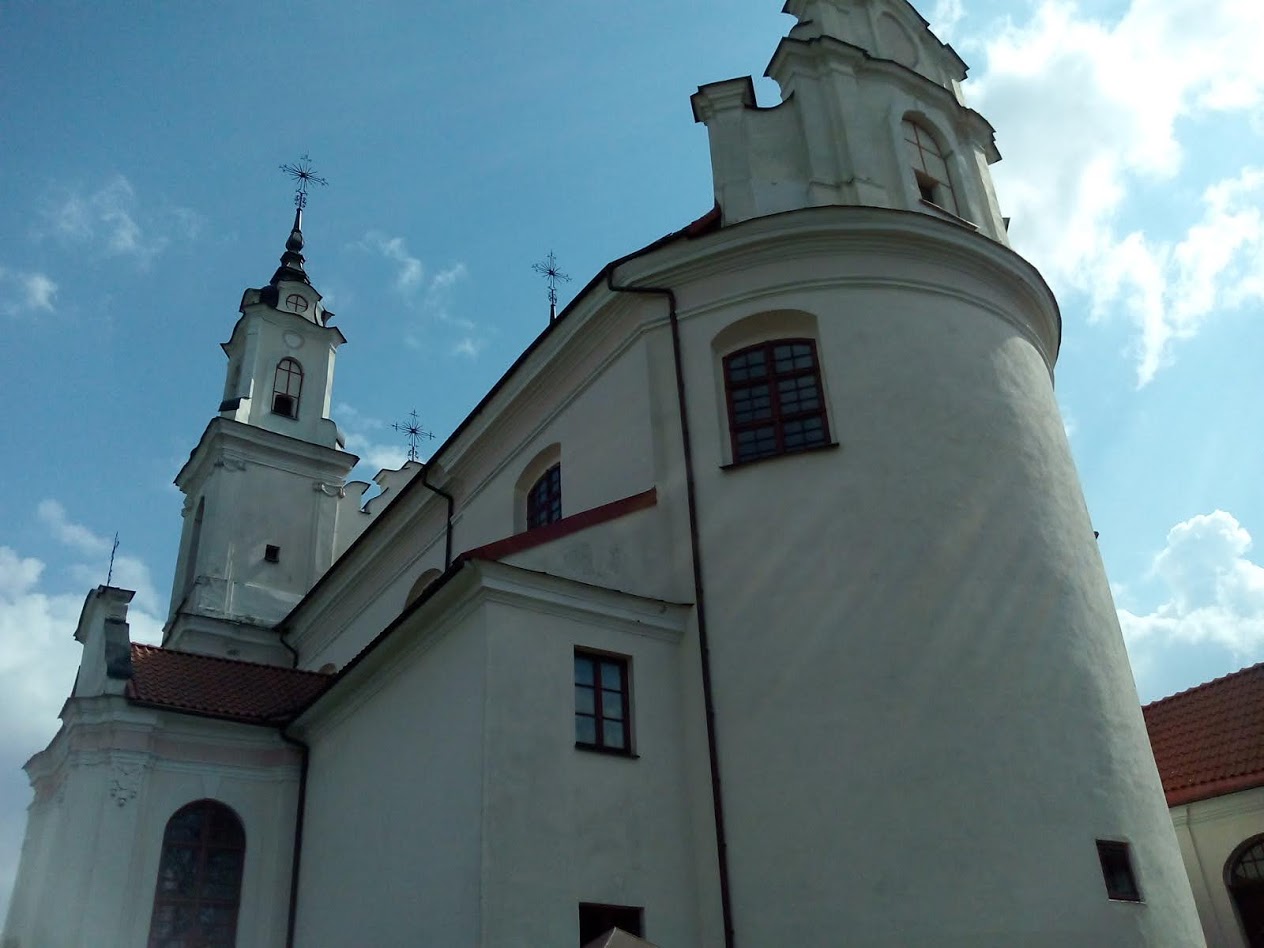 The late Baroque church was rebuilt in the 18th century. The central nave is decorated with 18th century mural paintings, the sacristy – with 18th century stucco relief works
The late Baroque church was rebuilt in the 18th century. The central nave is decorated with 18th century mural paintings, the sacristy – with 18th century stucco relief works
All photos are copyrighted by Vladislav B. Sotirovic
© Vladislav B. Sotirovic 2021
RELATED POSTS

The church is inconspicuous from the street, as its façade does not face the streetThe 51 meter-tall dome can be seen from seven Old Town streetsThe Dominican Church of the Holy Spirit is one of the most magnificent churches in Vilnius. It is an excellent monument of high and late Baroque All photos are copyrighted by Vladislav B. Sotirovic© Vladislav B. Sotirovic 2018
Continue Reading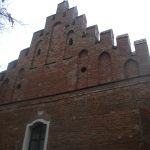
The church was named after St. Nicholas, who was the Bishop of Myra and the patron of travelers and merchants. The character of Santa Claus is thought to be based on this saintThe Church of St. Nicholas in Vilnius is the oldest surviving Late Gothic church in Lithuania. The small church was used by the Franciscan monks, who lived nearbyThe interior of the church is decorated with ornate rib and groin vaults. A 16th-century picture of St. Nicholas with a silver frame is located on the left altarAll photos are copyrighted by Vladislav B. Sotirovic© Vladislav B. Sotirovic 2018
Continue Reading
Trakų St. finishes where it meets Pylimo St, which runs along the course of the old city wall. There used to be a gate here, which was pulled down together with the wall at the very beginning of the 19th century. In the niche of the Umiastowski estate (Trakų St. 2) there is a Statue of "The City Guard" (1973) In Trakų Street, there is the Church of Our Lady of the Assumption that was founded here by the noble Goštautas family in 1387, the same year as Lithuania became converted to Christianity. However, it is believed that the church with the monastery existed even earlierOne of courtyards of the buildings in Trakų StreetAll photos are copyrighted by Vladislav B. Sotirovic© Vladislav B. Sotirovic 2020
Continue Reading
The building was noted for its stately late Baroque appearance. Michelangelo Palloni and Pietro Perti are thought to be the authors of the decorationsNoteworthy is an interesting Baroque pediment with a stucco bas-reliefA courtyard of the estate. Today, the buildings belongs to the Lithuanian Academy of Music and TheatreAll photos are copyrighted by Vladislav B. Sotirovic© Vladislav B. Sotirovic 2020
Continue Reading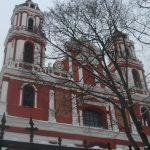
The church was built on the north side of the Lukiškių Square in 1624. However, the present building dates from the late 17th-18th cent.It is a single-nave Baroque church with cylindrical vaults. An image of the miraculous painting of the 18th century high altar occupies the niche above the porticoThe niches hold wooden 18th cent. statues of St. Hyacinth and St. Dominic. During the Soviet times there were designs to demolish the church but it did not ever happenAll photos are copyrighted by Vladislav B. Sotirovic© Vladislav B. Sotirovic 2018
Continue Reading
The Galera Gallery in the Užupis Art Incubator also operates there, where exhibitions of various kinds of art are organizedGalera of Užupis is an Alternative art gallery. That is a place similar to the former Christiana district in Copenhagen in DenmarkThe Užupis district and its Art Incubator are separated from the Old Town in Vilnius on three sides by the River Vilnia, and by a high hill on the fourth sideAll photos are copyrighted by Vladislav B. Sotirovic© Vladislav B. Sotirovic 2020
Continue Reading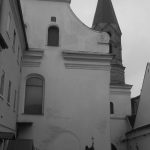
This is the first Evangelical Lutheran Church (Kirche) built-in Vilnius in 1555 on the initiative of the Chancellor of the Grand Duchy of Lithuania Nicholas Radziwiłł the Black. In front of the church, there is a monument erected to Martin Luther The church was rebuilt in 1662 and substantially reconstructed in 1738-1744. In 1944 it was closed down. In 1993 it was returned to the parishioners and renovatedThe church has a single nave and an original pentagonal shape. Its magnificent high altar was designed by German Protestant architect Jan (Johan) Krzysztof GlaubitzAll photos are copyrighted by Vladislav B. Sotirovic© Vladislav B. Sotirovic 2019
Continue Reading
The building in Vilnius Street in Vilnius No. 25 in which Jonas Basanavičius died in hospital on February 16th, 1927. The day of his death coincided with the anniversary of the Independence Act in 1918A memorial plaque on the building informs that in this building in 1909 the Editorial Board of the oldest Lithuanian newspaper "Lithuanian News" started to work Another memorial plague on the building as this building housed a music school, where the famous violinist Jascha Heifetz studied in 1905-1909 All photos are copyrighted by Vladislav B. Sotirovic© Vladislav B. Sotirovic 2022
Continue Reading
The interior sculptural décor was created by Pietro Perti (Italian master) in 1700-1705. Twin towers were built on in the 18th century. It was built by the efforts of Casimir Sapieha the Younger (1637-1720) in 1694-1717 On the façade frieze two Christian soldiers taken into captivity by the Muslims are represented. The main goal of the Trinitarian Order was returning such captives to their homelands The church has an impressive cupola (dome), the interior is adorned with stucco relief works and sculptures - a large part of them is survived. The church is a "sister" to the Church of St. Peter and St Paul in Vilnius (Antakalnis)All photos are copyrighted by Vladislav B. Sotirovic© Vladislav B. Sotirovic 2019
Continue Reading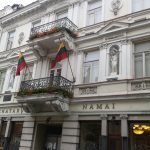
A museum operates today in the House of Signatories, along with a memorial hall where the act of Lithuania's independence was signed on February 16th, 1918 when Lithuania was under the German occupation and administration during WWI (1915-1918)The first floor of the house with statues symbolizing agriculture and fishing is very decorative. Niches on the second floor hold two male bustsHaving acquired this house in the late 19th century, Karol Sztral reconstructed it according to architect Aleksei Polozov's project in the style of HistoricismAll photos are copyrighted by Vladislav B. Sotirovic© Vladislav B. Sotirovic 2019
Continue Reading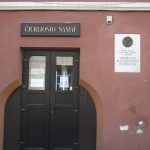
This building in Savičiaus Street in Vilnius Old Town acquired its present appearance in the 18th century with the 19th-century façade. Until the mid-19th century, the building was home to Vilnius governors and burgomasters In 1995, on the artist's 120th anniversary, a memorial culture center and the flat museum was opened in this house. The center and museum, today, hosts lectures on music, art, and philosophy, as well as chamber concertsM. K. Čiurlionis created 350 musical pieces and around 500 artworks. When he lived in this house, he created his most remarkable paintingsAll photos are copyrighted by Vladislav B. Sotirovic© Vladislav B. Sotirovic 2019
Continue Reading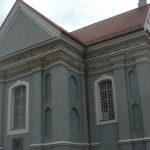
St. Lazarus' almshouse operated in this church, plague and famine victims were buried there. In 1715, the church and the monastery were given to the brethren of St. Rochus who tended to sick people, and in 1752 - to the sisters of MaryIn a cemetery at the church many outstanding people were buried, among others architect Laurynas Stuoka-Gucevičius. A memorial plaque to him is set up on the south façade of the church. However, later the cemetery was turned into a storage site of construction materialsThe church was severely damaged during a fire in 1794. The church was reconstructed and slightly transformed in 1801-1806. In 1864, the convent was closed down, and the buildings converted into a prisonAll photos are copyrighted by Vladislav B. Sotirovic© Vladislav B. Sotirovic 2020
Continue Reading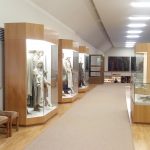
The museum is located in the north wing of the Old Arsenal and looks at Neolithic, Bronze and Iron Age Lithuania followed by the various tribes that inhabited the area until they combined to form a state in the 13th centuryThe museum displays object found in burial sites, such as pins, amulets, rings, brooches, knives or necklaces. You can as well as see regional dressses of Lithuanian tribes before the formation of the state in the mid-13th century The museum shows a hoard of some 16.000 17th-century coins found in 1999 in Vilnius. It is believed that the hoard may have been hidden during the 1700-1721 Great Northen War. Nevertheless, it is the largest collection of old coins to be found in Lithuania All photos are copyrighted by Vladislav B. Sotirovic© Vladislav B. Sotirovic 2020
Continue Reading
A geographical centre of Europe - 25 km far from Vilnius. From 2015 Summer You will get a special Certificate that you have visited the Geographical center of Europe. Don't miss the chance to get it for freeThe Baltic States of Europe - Estonia, Latvia & LithuaniaVytis (The Knight) - The Coat of Arm of both historical Grand Duchy of Lithuania and present-day the Republic of LithuaniaOrigins of images: Facebook, Twitter, Wikimedia, Wikipedia, Flickr, Google, Imageinjection & Pinterest.Read our Disclaimer/Legal Statement!Donate to Support UsWe would like to ask you to consider a small donation to help our team keep working.
Continue Reading
The life and work of Dr. Jurgis and Marija Šlapelis reflects the life of the region of Vilnius from the second half of the 19th century to 1940. Both of them have been cultural figures in Lithuania. Marija was actress. They published Lithuanian books that were banned at that timeDr. Jurgis and Marija Šlapelis owned the only Lithuanian language bookstore in Vilnius during 1906-1949. The Šlapelis family bought the house in 1926. Before, it was a goldsmith's workshops, and later housed a small holet called the Hotel de Philadelphie, and a wine shop The building is an example of the 17-th century architecture. Dr. Jurgis died in 1941, and Marija in 1977 at the age of 97. After WWII, the house was nationalised, and, therefore, Marija Šlapelis was forced to live in two small rooms upstairs, with the only access to them through another person's quarters. Marija stipulated in her ...
Continue Reading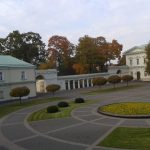
The palace has always been representional: rulers, kings, emperors and kings-to-be like Napoleon, Stanislaus August Poniatowski, Alexander I, Louis XVIII and others used to stay there on their visits to VilniusThe Soviets turned the palace into an officer's club later to be converted into Artist HouseIn 1939, when Vilnius had been part of Lithuania, plans to settle the Presidency in the palace were advanced. However, it was not until 1997 that these plans were carried outAll photos are copyrighted by Vladislav B. Sotirovic© Vladislav B. Sotirovic 2020
Continue Reading
The Augustines established themselves on this site in Vilnius Old Town after 1661. The monastery date from the late 18th centuryIn 1833-1842 the monastery housed the Vilnius Spiritual Academy. In 1859 it was converted into a Russian Orthodox Church of St. AndrewIn 1918 the church was returned to the Roman Catholics and renovated. After WWII the interior was destroyed during the installation of a ferroconcrete ceiling; the church was used as a warehouse in the Soviet timeAll photos are copyrighted by Vladislav B. Sotirovic© Vladislav B. Sotirovic 2019
Continue Reading
Mindaugas Bridge is constructed in 2003. It has the name of the only Lithuanian King crowned on July 6th, 1253On the foothill on the left riverside of Neris, there is a Renaissance building of Old Arsenal followed by the buildings of House of the Castle Keeper and New Arsenal On the right riverside of Neris, a new business center of Vilnius is growing during the last two decadesAll photos are copyrighted by Vladislav B. Sotirovic© Vladislav B. Sotirovic 2019
Continue Reading
A monument to dr. Jonas Basanavičius in Vilnius in front of the building of the Lithuanian National PhilharmonicDr. Jonas Basanavičius chaired the session of Lithuanian Council that adopted the Act of Independence of Lithuania on 1918-02-16. He was the first to sign the Act of the Proclamation of the Lithuanian IndependenceBalancing between Lithuanian and Polish interests, he refused to participate in the opening of the Polish Stefan Batory University (today Vilnius University)All photos are copyrighted by Vladislav B. Sotirovic© Vladislav B. Sotirovic 2020
Continue Reading
The silver cofin of St. Casimir is under a plaster canopy accompanied by relics. Under the cofin is a miraculous painting in a silver frame, with a silver statue with the saint's attributes placed on the cofin. The relief features a very rare depiction of a smiling Blessed Virgin Mary with Baby JesusIn the chapel there are eight silver-plated wooden Baroque statues of the Kings and Grand Dukes of Poland and Lithuania from the Gediminid and Jagiellon dynasties from the 17th centuryThree-Handed Image of St. Casimir c. 1520. This painting is considered to be miraculous. In 1743 the painting was put into a silver, gold-plated framing. St. Casimir is holding lilies and a rosary, which are his symbolsAll photos are copyrighted by Vladislav B. Sotirovic© Vladislav B. Sotirovic 2020
Continue ReadingChurch of the Holy Spirit & Former Dominican Monastery (Exterior)
Church of St. Nicholas
Trakų Street in Vilnius
Słuszki Estate in Vilnius
Church of St. Jacob and Philip (1)
Užupis Art Incubator (2)
Evangelical Lutheran Church
The Building in Vilnius Street No. 25
Church of Our Lord Jesus and the Trinitarian Monastery
The House of Signatories (Karol Sztral’s House)
M. K. Čiurlionis Memorial Flat Museum
Church of St. Stephen
The Museum of Archaeology of Lithuania
Lithuania – Geographical Center of Europe
The Šlapelis House Museum
The Inner Courtyard of the Presidential Palace in Vilnius
Church of Blessed Mary the Comforter and the Augustine Monastery
Vilnius Panorama of the Neris River
Jonas Basanavičius Monument in Vilnius
Chapel of St. Casimir (interior)



